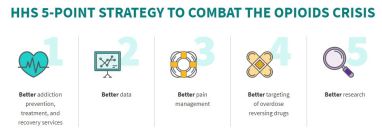News & Views: Medical device reporting, Cannabidiol policy, Benefit-Risk framework for opioid analgesics, CDER modernization, New drug approval transparency, Heart Failure treatment, Complex Innovative Trial Design Program, Safety with paclitaxel-coated stents, Prostate tissue ablation devices
 CDRH efforts to increase transparency in medical device reporting
CDRH efforts to increase transparency in medical device reporting
CDRH is updating Medical Device Reporting (MDR) Program
- End Alternative Summary Reporting (ASR) Program: Granted . exemption from individual medical device reports for well-known and well-established risks
- Implement Voluntary Malfunction Summary Reporting (VMSR) Program to efficiently detect potential safety signals
- Modernize Manufacturer and User Facility Device (MAUDE) database
- Actively engage in the National Evaluation System for health Technology (NEST)
 Sound, Science-based Policy on Cannabidiol
Sound, Science-based Policy on Cannabidiol
Apply rigorous, science-based approach to products containing cannabis or cannabis-derived compounds, including cannabidiol (CBD)
- Many unanswered questions about the science, safety, and quality of many of these products
- If product being marketed to have a therapeutic effect – regulated as a drug subject to FDA review and authorization
- If marketed as food, including dietary supplements- overarching goal of protecting consumers and currently illegal
FDA Public Meeting on May 31st for stakeholders to share feedback and experiences. Remaining open questions:
- Daily safe dose of CBD and variability depending on form
- Drug interactions
- Impacts to special populations – children, elderly, pregnant, lactating women
- Long-term exposure risks
 Benefit-Risk framework for evaluating opioid analgesics
Benefit-Risk framework for evaluating opioid analgesics
New draft guidance, “Opioid Analgesic Drugs: Considerations for Benefit-Risk Assessment Framework,”
- Benefit-risk assessment framework to address opioid crisis with focus on formal assessment of associated public health risks
- Assess benefits and risks of proposed new opioid analgesics relative to already approved opioid and non-opioid analgesics
- Provide information on mitigation of risks of overdose, abuse or addiction
- Provide public health implications of product in terms of risks to non-patients, including members of the patient’s household, visiting relatives, friends, others
- New REMS is safety profile different from already approved products
 Modernizing FDA’s New Drugs Regulatory Program
Modernizing FDA’s New Drugs Regulatory Program
Initiative to modernize the New Drugs Regulatory Program to better serve patients and staff in their work to carry out center’s mission
- Scientific Leadership: Grow scientific expertise; clarify regulatory pathways
- Integrated Assessment: Whether applications meet legal & regulatory requirements
- Benefit-Risk Monitoring: Monitor pre- and post- approval
- Managing Talent: Attract, develop, and retain outstanding people
- Operational Excellence: Standardize workflow, business processes, roles, responsibilities
- Knowledge Management: Facilitate identification, capture, distribution, effective use of information
 New drug approval transparency efforts
New drug approval transparency efforts
Efforts to enhance transparency around our drug approval decisions
- Focus on information to improve patient care and better inform health care professionals about the product
- Posting portions of clinical study reports after a drug receives FDA approval
- Requesting public comment about programs
 Treatment for hear failure: Endpoints for drug development
Treatment for hear failure: Endpoints for drug development
Guidance pertains primarily to treating both heart failure with reduced ejection fraction (HFrEF) and heart failure with preserved ejection fraction (HFpEF)
- Mortality data: Primary efficacy and safety
- Endpoints related to how patients feel and function: Evidence of effectiveness
- Hospitalization and outpatient intervention: All-cause vs. cause-specific
- Biomarkers and surrogate endpoints: For clinical benefit
- Acute heart failure: Symptom relief
- Heart failure with preserved ejection fraction
- Pediatric population

Circulatory System Devices Panel recommendations on late mortality safety signal associated with paclitaxel-coated products
Panel met to discuss safety vs benefit of paclitaxel-coated balloons and paclitaxel-eluting stents used to treat peripheral arterial disease in the femoropopliteal arteries
- Unanimously agreed that the aggregate data showed a mortality signal
- Could not conclude that the late mortality signal represented a class effect
- Missing data (vital status, repeat interventional treatments, paclitaxel exposure) hindered interpretation of analyses
- Could not identify patient subgroups that might be at particularly high (or low) mortality risk
- Observed rates of both cardiovascular and non-cardiovascular death were higher in patients treated with paclitaxel-coated devices vs. uncoated devices
- Precluded determination of relationship between paclitaxel dose and mortality
- Preclinical animal data do not indicate a potential biological mechanism for the late mortality signal
- Short-term benefits of paclitaxel-coated devices continue to outweigh the risks, and devices should not be removed from market; Additional comments on post-market surveillance and labeling
 Complex Innovative Trial Design (CID) Program
Complex Innovative Trial Design (CID) Program
The CID Pilot Program is designed to:
- Facilitate the use of CID approaches in late-stage drug development
- Use of complex adaptive, Bayesian, and other novel clinical trial designs
- Promote innovation by allowing FDA to publicly discuss the trial designs considered through the pilot program, including trial designs for medical products that have not yet been approved by FDA.
 Clinical investigations for prostate tissue ablation devices
Clinical investigations for prostate tissue ablation devices
Draft guidance to provide recommendations for high intensity ultrasound systems for prostate tissue ablation:
- Complying with clinical testing special control under 21 CFR 876.4340(b)(8) for 510(k)s)
- Collecting clinical data to support marketing submissions for new types of prostatic tissue ablation devices
Marketing authorization for a general indication for ablation of prostatic tissue
- High intensity therapeutic ultrasound energy into prostate to thermally ablate defined, targeted volume of tissue
- Achieve same clinical effect of ablating targeted tissue volumes using different sources of energy
- Does NOT address intended uses for the treatment of a specific disease (e.g., prostate cancer or benign prostatic hyperplasia)
Image credit: FDA